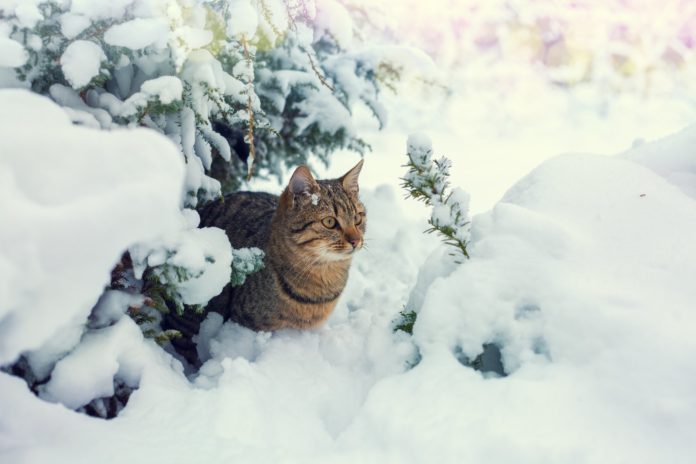You turned the heat up, the whole family is roasting, but your cat appears to be shivering! What do you do now?
First, consider reasons other than the ambient temperature for your cat’s behavior. A common cause of shivering or shaking in cats is hypoglycemia or low blood sugar. Hypoglycemia tends to occur in very young kittens who simply aren’t eating enough to stay warm and in cats that receive too much insulin when being treated for diabetes.
The immediate way to deal with low glucose in a diabetic cat is to put some honey or corn syrup on her gums. If you have a plastic dropper or syringe, you could put a couple drops of either in her mouth as well. If she does not respond fairly quickly with some improvement or starts to act unresponsive and “out of it,” call your veterinarian and head for the clinic. Severe hypoglycemia can be fatal.
Maybe She Is Cold
Of course, a shivering cat may be cold. If your cat was outside, especially if there was wet heavy snow or hard rain, she may be chilled. She could have hypothermia or a low body temperature. Normal body temperature for cats is 100.5 to 102.5 F. The same effect can result after bathing your cat, but usually to a lesser degree.
The first thing to do is dry your cat, using warm towels or a blow dryer on the low setting. Most cats will tolerate a blow dryer, but some will do everything they can to get away from it. Be careful with the heat. “High” is too strong for most cats. Once the cat is dry, the shivering should stop.
A high temperature or fever can cause shivering too. That seems to be contradictory, but if your cat’s inner body temperature is high, even a warm house can feel chilly. Any temperature reading much over 102.5 F indicates a fever. Fevers commonly accompany infection of some sort, whether viral or bacterial. A fever is a reason to contact your veterinarian.
For a young kitten, warm the kitten by holding her next to your body or wrap her in a warm towel. Once the kitten has warmed up a bit, feed her warm formula. That should help restore her body temperature and provide her some calories.
Painful Shivers
A cat in pain may shake or shiver. Usually these cats are hunched up and look uncomfortable or agitated. If you try to pick up a cat with this appearance, you may get hissed at. This is a time to carefully pick up the cat in a thick, warm towel and have your veterinarian check her over for the cause of the pain.
Shock
Cats in shock may shiver or shake, appear weak, feel cold to the touch, and have rapid heart rates. The cat should be wrapped in a warm blanket and brought to the veterinarian immediately.
Fear
A very fearful or stressed cat may also shake. As with pain, this is not true shivering, but it can be hard to distinguish the two. Many stressed cats will pant, have dilated pupils, and either freeze in place or hiss and swat at you. It is important to calm stressed cats down. See if you can determine the reason for the stress and remove it from the cat’s immediate environment.
Seizures
Seizures are not common in cas, but seizuring cats usually appear to shake, often urinate and/or defecate, and may vocalize. Seizures are medical emergencies that require immediate veterinary attention.
Senior Cats
Elderly cats, especially if they are thin, can often feel cold even in a warm house. You can help your cat to feel warm and comfy by doing some environmental adjustments. Put a cat bed near an heating vent or woodstove. Cats tend to be heat seekers naturally and will gravitate toward a warm spot.
You can also set up a heating pad under a bed or on part of a couch. Always make sure that the cat can move off the heating pad if she feels too warm.
An alternative to a heating pad is a hot water bottle. Cover the hot water bottle with a towel to dissipate some of the warmth. If you have a tiny kitten, she will warm up nicely in a sweatshirt pouch.




